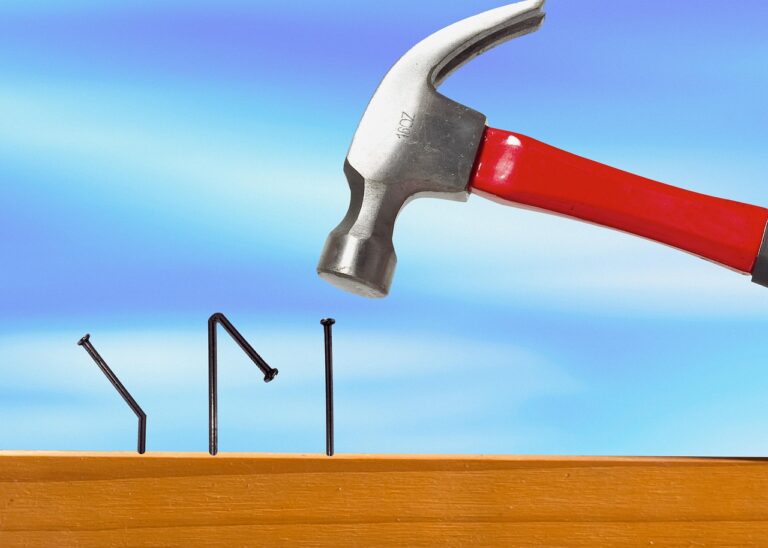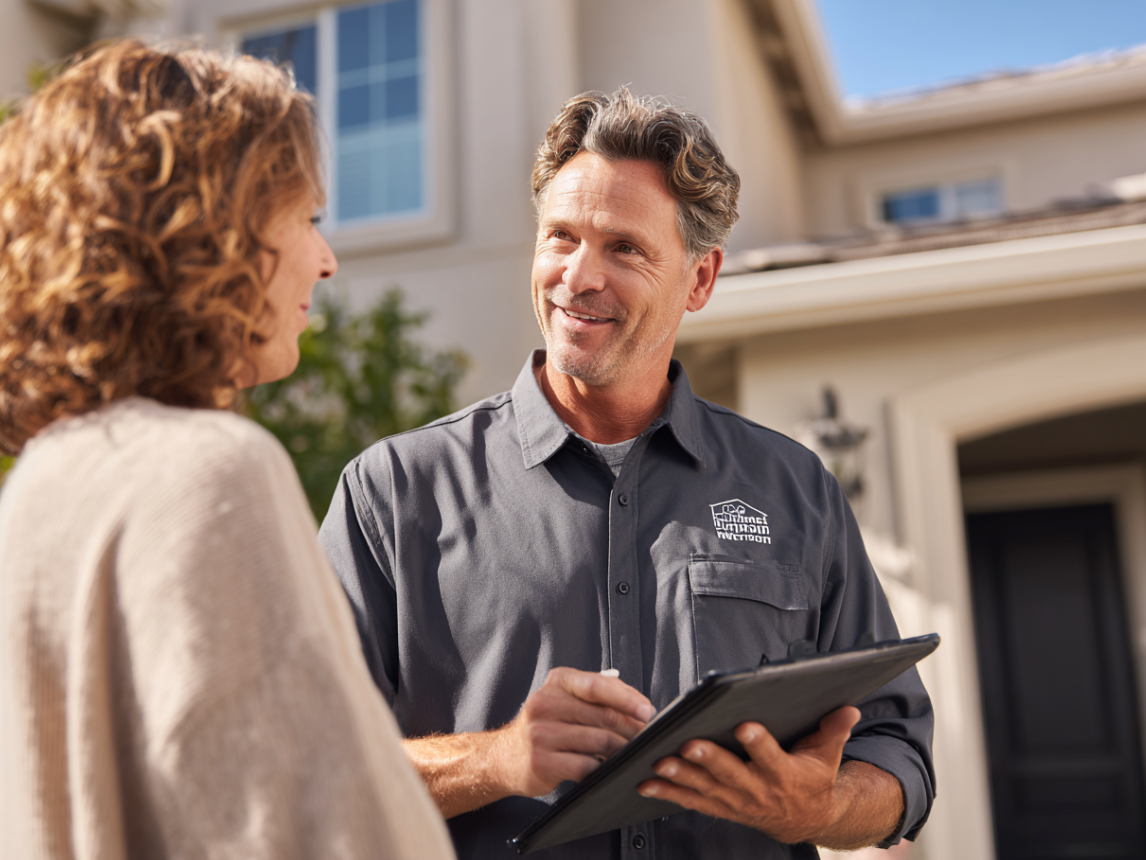It’s October, and the busy summer roofing season is winding down. Cooler weather is moving in, crews are wrapping up projects before the first freeze, and new leads are beginning to slow. You’ve sent out a handful of bids this month, made some follow-up calls, and then… silence.
A few weeks later, a homeowner tells you they went with another contractor. It wasn’t necessarily because your price was too high or your work wasn’t trusted, it was most likely because someone else followed up more consistently.
This scenario is common for roofing and home service professionals as fall turns into winter. The season brings unpredictable weather, tighter homeowner budgets, and increased competition for fewer projects. Without a structured sales follow up process, many contractors lose work they could have easily closed.
The difference between staying booked through winter or facing slow weeks often comes down to consistency in follow up. When done right, follow up builds confidence, strengthens relationships, and keeps your pipeline moving even in colder months.
- Homeowners hesitate to commit as holidays and year-end budgets approach.
- Weather delays and uncertainty make steady communication essential.
- Competition intensifies as contractors chase the same limited late-season opportunities.
Fall is the best time to sharpen your sales follow up system. By improving your process now, you can secure more jobs before the season ends and carry strong momentum into spring.
Key Takeaways
- How to create a reliable follow up system that keeps your schedule full during slow months
- What to consider before refining your sales follow up process, including timing, tools, and homeowner psychology
- The tools top contractors use to automate outreach and convert more quotes into booked projects
Need expert help right away? JobNimbus Marketing can help you strengthen your follow up system and finish the year strong.
Why Do Contractors Struggle With Sales Follow Up?
Contractors struggle with sales follow up because they lack consistent systems, accountability, and data-driven methods for managing communication.
Most contractors don’t lose jobs because of skill or pricing. They lose them because follow up isn’t prioritized or tracked. Roofing and home service work often runs on tight schedules, unpredictable weather, and urgent demands. Amid the chaos, lead management and follow up often take a back seat.
A sales follow up is any outreach after your initial quote or visit, such as a quick call, text, or email to keep the conversation active. A sales follow up process turns those actions into a repeatable, measurable system. It sets rules for timing, messaging, and accountability so that no lead gets forgotten.
Without that process, follow up becomes inconsistent. Some leads get multiple touches, others none. Teams lose track of who contacted whom, and opportunities slip through unnoticed.
Contractors who implement even a simple structure, like reminders, automation, or contractor marketing systems, can quickly improve their close rates and maintain consistent communication across every lead.. With consistency, you transform follow up from a guessing game into a predictable revenue driver.
What Does the Homeowner’s Decision Journey Look Like?
The homeowner’s decision journey includes five stages, and follow up is the key factor during the decision stage when deals are won or lost.
Every roofing or exterior project starts long before the contract is signed. Homeowners typically move through a predictable series of thoughts and actions that guide how they research, evaluate, and ultimately choose a contractor. Understanding this journey allows you to align your communication and follow up strategy to where the homeowner is mentally and emotionally. When you know what they’re thinking at each stage, you can anticipate their needs instead of reacting to silence.
In many cases, contractors make the mistake of treating every lead the same. A homeowner who is just starting to research is not at the same point as one who already has three quotes and is comparing warranties. The most successful contractors adjust their follow up approach to match each stage; educating early, reassuring in the middle, and providing clear next steps at the decision point.
Here’s what the typical homeowner’s decision journey looks like:
- Awareness: The homeowner notices a problem, such as a roof leak, missing shingles, or storm damage, and realizes they need help.
- Consideration: They research local contractors, compare reviews, ask for recommendations, and request multiple quotes to understand pricing and options.
- Decision: They evaluate proposals, communication styles, professionalism, and responsiveness, factors that influence trust more than cost alone.
- Conversion: They choose a contractor, schedule the project, and expect clear communication through completion.
- Retention: If the experience is positive, they return for future work or refer you to others.
Follow up is most critical during the decision phase. This is when the homeowner is narrowing down their options and looking for signs of reliability. A fast, friendly, and consistent follow up sets you apart as organized and customer-focused. It reminds them that the quality of your communication now reflects the quality of your work later.
Consistent, professional follow up keeps your business top of mind while competitors fade into the background. Every call, message, or email reinforces trust and shows that you take their project seriously. Even if the homeowner delays their decision, your persistence positions you as the obvious choice when they are ready to move forward. In a competitive market, that level of reliability often makes the difference between a lost opportunity and a signed contract.
Why Is Sales Follow Up More Important Now Than Ever?
Sales follow up is more important now because lead costs are rising, competition is increasing, and homeowners are taking longer to make decisions.
Contractors are facing more competition, tighter budgets, and slower homeowner decisions than ever before. Digital advertising has become crowded, homeowners are more informed, and buying behavior has shifted. Homeowners expect quick answers and professional communication, and they’re no longer basing their choice solely on price. That shift has made sales follow up one of the most powerful differentiators a contractor can control, and recent sales follow up statistics continue to prove just how much consistent communication impacts close rates.
Over the last several years, the roofing and home services industry has experienced major changes in how leads are generated and managed. Search and social advertising costs have climbed steadily, making each new lead significantly more expensive to acquire.
At the same time, online comparison tools and aggregator sites now flood homeowners with multiple quotes within hours of their request. This has leveled the playing field, meaning your communication strategy, not just your pricing, often determines who wins the job.
- Higher competition: Dozens of local contractors are now competing for the same lead through digital ads and referral networks.
- Rising lead costs: With paid ads, effective search engine optimization, and referral platforms becoming more expensive, each contact must yield a stronger return.
- Longer decision timelines: Homeowners often delay work due to financing, insurance claims, or seasonal weather.
- Elevated expectations: Homeowners judge professionalism by response speed, clarity, and consistency.
To make the most of your digital advertising budget, pairing your Google Ads campaigns with a disciplined follow up process ensures that the clicks you pay for turn into real homeowner conversations and booked jobs.
Fall and winter amplify these challenges. Many homeowners delay major projects until spring, assuming they have time to wait. Others push repairs to the next budget cycle or wait for better weather.
Contractors who stop following up during these months risk losing contact entirely. Those who continue steady communication, checking in about weather windows, financing options, or scheduling flexibility, often secure early spring bookings before competitors even restart their outreach.
Strong follow up is not just about closing one sale; it’s about long-term stability. In slow seasons, consistent follow up helps you fill your schedule and strengthen relationships that turn into repeat business. During busy seasons, it helps you maximize the value of each lead you already paid for.
When every dollar in marketing matters and homeowner attention spans are shrinking, your follow up system becomes your greatest competitive advantage. Contractors who stay responsive, consistent, and helpful at every stage don’t just survive changing market conditions, they thrive because they’re the first and last name homeowners remember when it’s time to hire.
What Do the Statistics Say About Effective Sales Follow Up?
The data shows that most contractors give up too soon, while structured, multi-touch follow up significantly increases close rates.
Numbers tell a clear story: consistent follow up is the single biggest difference between contractors who win work consistently and those who don’t. These sales follow up statistics highlight how small improvements in persistence and timing can lead to major gains in closed deals.
Industry research continues to confirm this pattern across multiple sales environments, including home services and construction. The most successful contractors treat follow up like a process, not a guess. They know that few homeowners buy after the first estimate, and they build their outreach around that reality.
Consider these statistics from recent studies:
- 80 percent of sales require five to twelve follow ups to close.
- 44 percent of salespeople stop after one follow up, assuming the lead is not interested.
- Only 2 percent of sales happen on the first contact, meaning 98 percent require additional engagement.
- 95 percent of conversions occur after six or more interactions with the same prospect.
These numbers illustrate the enormous opportunity most contractors overlook. If your current process stops at one or two follow ups, you’re effectively walking away from the majority of potential revenue.
For roofing and exterior contractors, follow up isn’t just about persistence, it’s about professionalism and timing. Homeowners often delay decisions for reasons that have nothing to do with your quote. They may be waiting on insurance, juggling family expenses, or comparing materials. When you continue to follow up respectfully and add value, by answering questions, offering seasonal insights, or sending reminders about weather risks, you position your company as helpful rather than pushy.
The best follow up strategies use data to drive decisions. For example, if your CRM shows that most replies occur on the third or fourth touch, that’s a signal to adjust your sequence or timing. Similarly, tracking open rates and call responses reveals which messages resonate with homeowners and which need improvement.
Data-driven follow up ensures that your communication isn’t random, it’s strategic. Each touch builds on the last, improving engagement and moving the homeowner closer to a decision. Over time, this approach compounds your results, turning more quotes into completed projects without increasing your marketing budget.
In an industry where competition is fierce and margins are tight, the contractors who commit to structured, measurable follow up are the ones who grow consistently year after year. The statistics don’t just prove that follow up works, they prove that it’s the most controllable factor in your sales success.
How Fast Should Contractors Follow Up After a New Lead?
Contractors should follow up within five minutes of receiving a lead to maximize contact rates and conversion opportunities.
When it comes to capturing an interested lead and moving them forward towards a project, speed is everything. When a homeowner reaches out through your home exterior or roofing website, a through a lead form or your paid ads, this means they are actively searching for help. At that exact moment, they are also likely contacting several other contractors. The contractor who responds first sets the tone, earns the first conversation, and most often, wins the job.
Studies across industries consistently show that lead response time is one of the strongest predictors of sales success. Roofing and home service businesses are no exception. A slow follow up sends a message of disorganization, while a fast response signals professionalism and reliability, two qualities homeowners value most when deciding who to trust with their home.
Research confirms just how critical timing is:
- 35 to 50 percent of sales go to the first responder.
- Responding within five minutes makes you nine times more likely to connect with the lead.
- Waiting one hour reduces the odds of qualifying that lead by ten times.
This urgency becomes even more important during the fall and winter months. Many homeowners are working against seasonal deadlines, trying to fix leaks or complete exterior projects before bad weather hits. A delayed response can easily push a project to spring—or worse, to a competitor who replies first.
To achieve faster follow up, contractors should invest in systems that eliminate delays. A few practical steps include:
- Set up instant notifications in your CRM so your team is alerted the moment a lead arrives.
- Use automated confirmation messages that immediately thank the homeowner and confirm that their inquiry has been received.
- Assign clear responsibilities for who follows up first, especially during evenings and weekends when leads are most active.
Even a brief, polite message such as, “Thanks for reaching out! I received your request and can call you shortly to discuss your project,” goes a long way toward securing trust and keeping the homeowner engaged. Using a mobile lead management app allows your team to respond to inquiries instantly, even from the field, so no opportunity is missed while crews are on the go.
Responding within minutes also allows you to shape the homeowner’s expectations early. You can schedule a call, explain your process, or answer questions before competitors even reply. That first impression communicates not only speed but reliability, setting the stage for a positive customer experience throughout the entire project.
In short, fast follow up is more than a sales tactic, it’s a signal of your business culture. Contractors who respond quickly demonstrate accountability, attentiveness, and respect for the customer’s time. Over a full season, that consistency builds reputation, loyalty, and measurable increases in booked work.
What’s the Best Sales Follow Up Cadence for Contractors?
The best sales follow up cadence includes eight to ten touches over four to six weeks, using multiple communication channels to build trust and increase conversions.
Establishing a follow up cadence is one of the most effective ways to improve your close rate without spending more on marketing. A cadence is the structured rhythm of when and how you contact your leads after an estimate or initial conversation. It prevents leads from slipping through the cracks and ensures that your team communicates with purpose and consistency.
Homeowners today are bombarded with options, and their attention spans are shorter than ever. Without a plan, it is easy for your messages to get lost in inboxes or voicemails. A defined cadence keeps your name visible at regular intervals, reminding potential customers that you are available, organized, and invested in earning their business. It also helps you stay top of mind during their natural decision-making process, which often stretches several weeks or longer.
Touch | Channel | Timing | Goal |
1 | Email or Call | Within 5 minutes | Acknowledge the inquiry and confirm interest |
2 | Voicemail and Email | Day 2 | Reference the proposal and invite questions. |
3 | Call and Text | Day 5 | Ensure they received your estimate and offer help. |
4 | Email (Value-Add) | Day 9 | Share a relevant tip, testimonial, or resource. |
5 | Call | Day 14 | Discuss scheduling or address remaining concerns. |
6 | Day 20 | Reassure about timelines, warranties, or financing. | |
7 | Text or Email | Day 28 | Gentle reminder to reconnect before the next weather shift. |
8 | Final Email | Day 35 to 40 | Thank them for their time and leave the door open for future contact. |
It’s worth noting that contractors running Facebook Ads can also strengthen performance by aligning ad engagement with structured follow up timing, ensuring every form submission receives consistent contact through the entire sales cycle.
The above cadence balances persistence with professionalism. Early contacts are spaced closely to keep momentum high, while later ones taper off to avoid overwhelming the prospect. The key is variety and purpose. Each message should offer new information or reassurance, not just a repeated “checking in.” When every interaction adds value, your follow up feels helpful rather than pushy.
For example, your fourth or sixth message could share a blog link about roof preparation for winter or a quick video explaining material warranties. These small touches reinforce your expertise and keep homeowners engaged, even if they are not ready to commit immediately.
Tracking your cadence performance is equally important. Review open rates, reply rates, and which touches convert most often. You may find that calls produce the best engagement early in the process, while emails perform better later when homeowners are making final comparisons. Adjust your timing and content based on that data to make each follow up more effective.
A consistent cadence does more than improve conversion numbers. It builds confidence in your team and your brand. Homeowners appreciate contractors who follow through on communication promises because it signals how they will handle the project itself. In a market where reliability is rare, that trust can be your greatest competitive advantage.
What Are the Most Common Sales Follow Up Mistakes Contractors Make?
The most common mistakes include stopping too soon, waiting too long, using only one communication channel, sending generic messages, and failing to track performance effectively.
Even the most experienced contractors can fall into habits that hurt their close rates. The problem is rarely a lack of effort but rather a lack of structure. When follow up is inconsistent or poorly planned, opportunities are lost quietly. These mistakes are common across the industry, but each can be corrected with simple, disciplined adjustments that quickly improve results.
Many contractors believe that once an estimate is sent, the job is out of their hands. However, research shows that homeowners often need multiple reminders before committing. What might feel like persistence on your end usually reads as professionalism to them. Recognizing and fixing the most common follow up errors will help you win more business from the leads you already have.
- Stopping Too Soon: Most contractors stop after one or two follow ups. Since the majority of sales occur after at least five touches, quitting early means forfeiting opportunities that are still very much alive. Extend your process to include at least eight follow ups over several weeks, especially for high-value jobs.
- Waiting Too Long: Delayed responses create uncertainty. When homeowners do not hear back promptly, they assume you are too busy or uninterested. Make it a rule to respond within minutes to new inquiries and schedule your first follow up within forty-eight hours.
- Using Only One Channel: Relying on a single communication method limits your reach. Some homeowners prefer emails, others respond better to text or phone calls. Mixing channels allows you to reach prospects where they are most comfortable.
- Sending Generic Messages: The quickest way to lose attention is with vague, repetitive outreach. Instead of “Just checking in,” personalize each message with context from your last conversation, project details, or seasonal insights. For example, “I wanted to follow up about the ridge vent issue we discussed last week. We have materials available this month if you’re ready to schedule.”
- Not Tracking Performance: Without data, improvement is impossible. Many contractors fail to record when and how follow ups occur, making it difficult to identify what works best. Use your CRM or a simple spreadsheet to log every contact attempt, note the response, and adjust your strategy based on trends.
Each of these mistakes can quietly drain thousands in potential revenue each year. Correcting them is not complicated, but it does require commitment. The key is consistency. Contractors who approach follow up with the same professionalism they bring to a job site see better results almost immediately.
When your follow up is organized, timely, and intentional, it communicates something powerful about your company’s culture. Homeowners notice the difference between a contractor who is reactive and one who is reliable. Avoiding these common pitfalls not only increases your close rate but also strengthens your reputation as a dependable partner for homeowners who value trust and communication.
How Can Contractors Personalize Their Sales Follow Up?
Contractors can personalize follow up by referencing project details, offering relevant insights, and communicating through each homeowner’s preferred method to build stronger trust and engagement.
Personalization is the key to turning routine follow up into meaningful communication. Homeowners receive countless generic messages from contractors every year, and most are ignored because they sound the same. A personalized message, however, stands out immediately. It shows that you listened, that you care about their project, and that you are paying attention to the details that matter to them.
At its core, personalization is about building connection. When a homeowner feels recognized as an individual rather than another estimate number, they begin to associate your business with professionalism and integrity. This trust often makes the difference when they are deciding between two comparable bids. For roofing and home service contractors, where projects are personal and high-value, that level of rapport is essential.
Here are several ways to make your follow up more personal and effective:
- Reference specific project details. Mention what you discussed during the inspection, such as the age of the roof, flashing concerns, or color preferences. This reassures homeowners that you remember their property and situation.
- Share visual examples. Include photos or case studies of similar projects, especially those completed in their area or under similar conditions. Real examples build confidence in your craftsmanship.
- Add relevant educational value. Offer short tips or resources that relate to their needs, such as a fall roof maintenance checklist, a guide to preparing for winter storms, or a short article on material comparisons.
- Match their communication style. Some clients prefer texting; others like phone calls or email. Use the channel they respond to most often.
- Acknowledge timing and urgency. If they mentioned waiting for insurance approval or financing, check in when you know the timeline has likely moved forward. This shows awareness without pressure.
Personalization is not about sending longer messages. It is about making each contact purposeful and relevant. A short, specific text or email that answers a question or provides a useful update does far more than a generic paragraph asking if they are “still interested.”
Contractors who personalize consistently also benefit from stronger word-of-mouth marketing. Homeowners who feel valued are more likely to refer your company to others or leave positive reviews. This creates a ripple effect that strengthens your brand reputation long after the initial job is complete.
Finally, personalization builds the bridge between follow up and trust. Each interaction is a small reminder that your business operates with care, consistency, and accountability. Over time, this steady professionalism positions your company as the contractor homeowners return to again and again. In a market where trust is everything, a personalized follow up is one of the most powerful sales tools you have.
What Should Contractors Do Before Overhauling Their Follow Up Process?
Before redesigning a follow up system, contractors should audit their pipeline, clean their data, define their ideal clients, choose the right tools, and test their strategy for accuracy and results.
A strong sales follow up process does not begin with new tools or scripts; it begins with a clear understanding of where your current system is breaking down. Many contractors skip this step, jumping straight into buying software or changing their approach without first identifying what is actually causing the problem. Taking time to assess your current pipeline and habits helps you create a system that fits your business rather than one that adds more complexity.
Preparation is the difference between quick fixes and long-term improvement. When you audit your existing process, you can see exactly where leads are being lost, which messages are working, and how your team is handling communication.
This insight allows you to make changes that are specific, data-driven, and effective. Without that groundwork, you risk repeating the same mistakes under a new process.
Here are five steps every contractor should take before overhauling their follow up system:
- Audit Your Pipeline
Start by identifying where leads tend to drop off. Review how many contacts are made before a lead goes quiet and note the most common points of disengagement. Ask questions such as: Are homeowners responding after the estimate? Are we following up soon enough? How many touches happen before we stop trying? Understanding these patterns will show you where to focus your improvements. - Clean Your Data
A disorganized CRM is one of the biggest obstacles to consistent follow up. Outdated contact information, duplicate entries, and untagged leads make it difficult to stay organized. Before launching any new process, take time to verify phone numbers, email addresses, and lead sources. Tag or categorize leads based on their stage in the sales process so that communication can be better targeted. - Define Your Ideal Customers
Not every lead is worth the same effort. Identify your most profitable project types, service areas, and customer profiles. For example, if full roof replacements provide stronger margins than small repairs, prioritize those leads with faster and more persistent follow up. Understanding your ideal customer helps you allocate time and resources where they will have the most impact. - Choose the Right Tools
Technology can improve efficiency, but only if it aligns with your workflow. Select a CRM or project management system that allows automation, easy communication logging, and team accountability. Look for tools that integrate email, text, and call tracking in one place. Train your team thoroughly so the system is used consistently. Offering built-in homeowner financing options can strengthen your follow up success by removing budget barriers and helping customers commit sooner. A tool only works if it becomes a daily habit. - Test and Refine
Before fully rolling out your new system, test it with a small group of leads or a single team member. Compare two versions of your follow up cadence, such as one with five touches and another with eight. Track which approach gets better responses or closes more sales. Use that data to refine your system before implementing it across your business.
By preparing in this way, you turn follow up improvement into a structured process instead of trial and error. A few hours of planning can save you weeks of frustration later and ensure that every change you make moves you closer to predictable, repeatable success.
When your foundation is strong, the rest of your sales process becomes easier. Auditing, cleaning, defining, and testing give you clarity about what works and what needs adjustment. This level of discipline is what separates reactive contractors from those who grow steadily year after year. Preparation builds confidence, and confidence leads to consistent results.
What Metrics Should Contractors Track to Improve Follow Up?
Contractors should track response times, the number of touches per close, communication channel effectiveness, and lead drop-off points to continuously improve follow up performance.
In sales, what gets measured gets managed. The best contractors treat their follow up process like a living system that evolves based on data, not guesswork. Tracking performance metrics allows you to see exactly how your team communicates, how quickly they respond, and what methods actually convert leads into jobs. Without measurable insights, follow up remains inconsistent, and valuable opportunities can go unnoticed.
Many contractors underestimate how powerful even basic tracking can be. By reviewing a few key indicators each month, you can identify where leads stall and make small, precise adjustments that lead to major performance gains. The goal is not to track everything but to track what matters most for improving consistency, conversion, and communication quality.
Here are the core metrics every contractor should monitor:
Response Time: Measure how long it takes from the moment a lead arrives until the first contact is made. The faster your response, the higher your chances of conversion. Ideally, this time should be measured in minutes, not hours. Tracking this metric helps reveal whether staffing, notification systems, or workflow changes are needed to reach leads more efficiently.
Touches Per Close: Track how many follow ups it takes, on average, to convert a lead into a sale. This number helps determine whether your team is following through long enough or giving up too early. If most deals close after the fifth or sixth touch, for example, then stopping after the second follow up leaves business behind.
Channel Effectiveness: Analyze which communication methods perform best. Some markets respond better to text messages, while others engage more through calls or emails. Knowing where homeowners are most likely to respond helps you allocate time and resources strategically.
Drop-Off Points:
Identify when leads tend to disengage. Are they ghosting after receiving a quote, or are they going quiet after your third follow up? Pinpointing these patterns lets you adjust your messaging, cadence, or tone at critical stages of the process.
Conversion Rate Improvement: Measure your close rate before and after implementing changes to your follow up system. This helps determine whether new strategies, templates, or cadence adjustments are truly effective. Regular tracking turns experimentation into progress rather than trial and error.
Collecting these numbers is only half the work. The real value comes from interpretation and action. Reviewing metrics as a team once a month can uncover trends that would otherwise go unnoticed. For instance, if data shows that most homeowners respond on weekends or evenings, adjusting your outreach schedule could instantly improve results.
When you base your decisions on evidence instead of assumptions, your follow up process becomes more predictable and efficient. Over time, consistent measurement will lead to faster responses, better communication, and a higher percentage of closed jobs.
Data-driven follow up builds a culture of accountability and excellence within your company. It turns daily communication into a repeatable, high-performing system that benefits both your customers and your bottom line. With reliable metrics, you are no longer guessing what works—you are continually improving what already does.
How Can Contractors Overcome the Top Sales Follow Up Mistakes?
Contractors can overcome follow up challenges by building structured, data-driven systems that emphasize speed, consistency, and personalization throughout every stage of communication.
Every contractor encounters follow up challenges at some point. The difference between companies that struggle and those that grow steadily is process. Once you recognize that poor follow up is a system issue rather than a personal one, you can correct it. The most successful contractors create clear, documented standards for communication so every team member follows the same proven process.
Start by defining exactly what effective follow up looks like in your company. Set expectations for timing, frequency, and tone. For example, decide that all new leads must receive a response within five minutes, that every homeowner gets at least eight follow ups, and that all communication is logged in your CRM. These guidelines transform good intentions into repeatable actions that everyone understands.
Focus on quality as much as consistency. Homeowners can tell the difference between a generic message and one that provides real value. Every contact should move the conversation forward, answering a question, offering a helpful resource, or reinforcing trust. When your messages feel relevant, follow up becomes a service rather than a sales tactic.
Technology helps make this easier. A CRM with automation tools can handle scheduling, reminders, and documentation so your team can concentrate on personal interactions. It also gives you visibility into performance, helping you identify slow response times or incomplete sequences before they cost you opportunities.
Integrating a dedicated digital payments solution can streamline the process from quote to contract, helping homeowners complete transactions quickly and securely once they’re ready to move forward.
Accountability is the final piece. Review follow up performance weekly or biweekly and celebrate small improvements. Tracking results regularly builds discipline and ensures your system continues to evolve with the business.
Over time, consistent, thoughtful follow up becomes a hallmark of your brand. It reflects your reliability, professionalism, and commitment to service, all qualities that homeowners notice when deciding who to hire. With structure, technology, and accountability in place, contractors can turn what was once a weak point into one of their strongest competitive advantages.
So, What Exactly Should Contractors Do to Improve Sales Follow Up?
To improve sales follow up, contractors should respond faster, communicate consistently, personalize every message, and measure results to drive continuous improvement.
Improving your follow up process is not about overhauling your business overnight—it is about building reliable habits that keep your company visible and trusted. A clear system ensures that no lead is forgotten, every homeowner receives consistent communication, and your team works with focus and purpose instead of guesswork.
Core steps for stronger follow up:
- Respond to new leads within five minutes whenever possible.
- Maintain at least eight to ten meaningful touches per lead.
- Use a mix of communication channels such as calls, texts, and emails.
- Add value in every interaction with helpful details or relevant updates.
- Track performance data and refine your cadence regularly.
Contractors who master these steps consistently book more jobs from the leads they already have. Reliable follow up builds momentum, especially in the slower months, and helps you stay top of mind when homeowners are ready to make decisions.
If you want to simplify this process and build a proven system that keeps your crews busy year-round, JobNimbus Marketing can help you get there faster with tailored tools and expert guidance.
FAQs About Sales Follow Up for Contractors
What is a sales follow up process?
A sales follow up process is a structured plan for contacting potential customers after an initial estimate. Its purpose is to keep communication consistent, build trust, and move the homeowner closer to booking a project.
How important is follow up in sales?
Follow up is essential to closing deals. About 80 percent of sales require five or more follow ups, yet most contractors stop after only one or two. Consistent outreach shows professionalism and greatly increases your chance of winning the job.
How quickly should contractors respond to new leads?
Contractors should respond to new leads within five minutes of receiving an inquiry. The first contractor to reply often earns the homeowner’s attention and wins 35 to 50 percent of available projects.
How many times should a contractor follow up?
Contractors should plan for at least eight to ten follow ups over a four to six week period before pausing outreach. This timing keeps your business top of mind without overwhelming the homeowner.
What communication channels work best for follow up?
A mix of communication channels works best, including calls, texts, emails, and voicemails. Every homeowner communicates differently, so using multiple channels ensures a better chance of connecting and maintaining engagement.
How can contractors automate their follow up process?
Contractors can automate their follow up process using a CRM such as JobNimbus that manages reminders, templates, and message tracking. Automation saves time, improves consistency, and ensures no lead is forgotten.
Table of Contents
Keep on learnin'
Related Articles

Year-End Tax Savings for Roofers: Why Paying for Marketing Up Front Pays Off

The Top 5 Marketing Mistakes Roofing Companies Make (And How to Fix Them)

Seasonal Roofing Marketing Ideas: A Year-Round Content Strategy for Roofers



